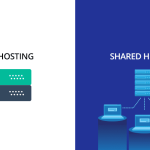When it comes to choosing a web server for your website or application, three names often come up: Nginx, Apache, and LiteSpeed. Each of these web servers has its strengths and weaknesses, making them suitable for different use cases. In this blog, we'll explore the pros and cons of Nginx, Apache, and LiteSpeed to help you decide which one is the best fit for your needs.
1. Nginx
Nginx, pronounced "Engine-X," is a high-performance web server known for its speed and efficiency. It’s widely used by high-traffic websites and is often chosen for its ability to handle concurrent connections efficiently.
Pros of Nginx:
- High Performance and Low Resource Usage: Nginx is designed to handle a large number of concurrent connections with minimal resource consumption. It uses an event-driven, asynchronous architecture, which makes it highly efficient and scalable, especially for high-traffic sites.
- Reverse Proxy and Load Balancing: Nginx excels as a reverse proxy and load balancer, distributing traffic across multiple servers to ensure smooth performance and high availability.
- Fast Static Content Delivery: Nginx is particularly effective at serving static content (like images, CSS, and JavaScript files) quickly, making it ideal for websites with high static content needs.
- Security Features: Nginx has built-in security features like rate limiting, IP whitelisting, and SSL/TLS termination, helping to protect your website from common web threats.
- Ease of Configuration: While Nginx’s configuration syntax is different from Apache’s, many users find it more straightforward once they get used to it. Nginx’s configuration files are concise and easy to manage.
Cons of Nginx:
- Limited Support for .htaccess: Unlike Apache, Nginx does not support
.htaccess files. This can be a drawback for users migrating from Apache who rely heavily on .htaccess for URL rewriting and access control. - Learning Curve: For users familiar with Apache, transitioning to Nginx might require some time to learn the new configuration style and commands.
- Less Compatibility with Legacy Applications: Some older web applications and content management systems (CMS) are better supported by Apache. While Nginx can handle most modern applications, there might be compatibility issues with older ones.
2. Apache
Apache HTTP Server, commonly referred to as Apache, is one of the oldest and most widely used web servers. It has been a staple in web hosting for decades and offers a robust, feature-rich environment.
Pros of Apache:
- Extensive Module Ecosystem: Apache’s modular architecture allows users to extend its functionality with a wide range of modules. This makes it highly versatile, supporting everything from basic static content delivery to complex dynamic applications.
- .htaccess Support: Apache’s support for
.htaccess files is one of its standout features. This allows users to control server configurations at the directory level, making it easy to implement URL rewrites, access controls, and other settings without editing the main configuration files. - Wide Compatibility: Apache is highly compatible with a broad range of software, including older web applications and content management systems. It’s also well-supported by most hosting providers and control panels like cPanel.
- Comprehensive Documentation and Community Support: Apache has been around for a long time, so there’s a wealth of documentation, tutorials, and community support available. This makes it easier to troubleshoot issues and learn how to use the server effectively.
Cons of Apache:
- Performance Limitations: While Apache is powerful, it can be less efficient than Nginx when handling a high number of concurrent connections. Its process-driven architecture can lead to higher memory usage, which may affect performance under heavy load.
- Complex Configuration: Apache’s flexibility comes at the cost of complexity. Its configuration files can be intricate, and managing them effectively requires a good understanding of the server’s workings.
- Resource-Intensive: Apache can be more resource-intensive compared to Nginx, especially when handling dynamic content. This can be a concern for websites with limited server resources.
3. LiteSpeed
LiteSpeed is a commercial web server that is known for its high performance and ease of use. It’s particularly popular among hosting providers due to its speed and ability to handle high traffic with minimal resource usage.
Pros of LiteSpeed:
- Superior Performance: LiteSpeed is optimized for speed and can handle more requests per second than both Apache and Nginx. It’s designed to serve dynamic content quickly and efficiently, making it ideal for high-traffic websites.
- Drop-In Replacement for Apache: LiteSpeed is fully compatible with Apache’s features, including
.htaccess files, mod_rewrite, and mod_security. This makes it easy to switch from Apache to LiteSpeed without needing to reconfigure your server or applications. - Built-In Caching: LiteSpeed comes with a powerful built-in caching system (LiteSpeed Cache) that can significantly improve website performance. It’s particularly effective when combined with WordPress, Joomla, and other CMS platforms.
- Enhanced Security: LiteSpeed includes advanced security features, such as anti-DDoS protection, SSL/TLS support, and the ability to mitigate common web attacks. These features help ensure that your website remains secure.
- Low Resource Consumption: Despite its high performance, LiteSpeed is very efficient in its use of server resources. It can handle a high number of concurrent connections without consuming excessive CPU or memory.
Cons of LiteSpeed:
- Cost: Unlike Apache and Nginx, LiteSpeed is not free. It’s a commercial product with licensing fees, which can be a drawback for small businesses or developers on a budget.
- Closed Source: LiteSpeed is a proprietary software, meaning its source code is not open to the public. This limits customization and may be a concern for those who prefer open-source solutions.
- Smaller Community: While LiteSpeed has a dedicated user base, its community is smaller compared to Apache and Nginx. This can make finding support and resources more challenging.
Which Web Server Should You Choose?
- Choose Nginx if:
- You need a high-performance, low-resource server for a high-traffic website.
- You require efficient static content delivery and a robust reverse proxy solution.
- You prefer an event-driven architecture for handling concurrent connections.
- Choose Apache if:
- You need extensive module support and compatibility with a wide range of applications.
- You rely on
.htaccess for per-directory configuration and prefer a mature, widely supported server. - You are running legacy applications or need a server with comprehensive documentation and community support.
- Choose LiteSpeed if:
- You are looking for superior performance with easy integration into existing Apache setups.
- You want a server with built-in caching and enhanced security features.
- You are willing to invest in a commercial product for the best possible performance and ease of use.
Each web server—Nginx, Apache, and LiteSpeed—offers unique benefits that make it suitable for different scenarios. By understanding the strengths and limitations of each, you can make an informed decision that aligns with your specific needs, ensuring that your website or application runs smoothly and efficiently.







